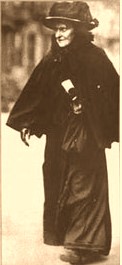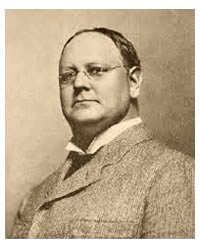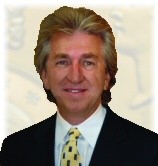Posted by Jeff Garrett on the NGC Weekly Market Report …..
The Green Pedigree is probably best known because of the association with the 1913 Liberty Nickels.
Several weeks ago I discussed the recent sale of selections from the Eric P. Newman Collection. The sale was very successful and by now many are familiar with this iconic collection and the man behind it. Eric is a true numismatic giant in every sense. His foresight and depth of knowledge will be greatly rewarded as his vast collection is offered for sale. As everyone knows, most of the Newman coins have been off the market for decades. A second offering of coins from the collection is scheduled in November. There is little doubt that many auction records will be shattered as his coins cross the auction blocks.
Many of the great coins in the Newman Collection trace their origins to the collection of Colonel Ned Green. The Green Pedigree is noted on the NGC label on many of the certified coins in the Newman Collection. The Green Pedigree is probably best known because of the association with the 1913 Liberty Nickels. Green owned all five examples, but these coins were just a tiny fraction of the huge collection assembled by this incredibly interesting figure. Recently I discovered exactly how interesting the Green Pedigree is.
While playing a round of golf a few months ago, I mentioned the Newman Collection and its connection to Colonel Green. A fellow playing partner suggested that I obtain a copy of a book published in the 1960s titled The Day They Shook The Plum Tree, by Arthur H. Lewis. I obtained a copy and shortly thereafter became enthralled with the story of one of the most interesting and bizarre families possible. For anyone interested in buying a coin with the Green Pedigree, the book is highly recommend reading. Below is a brief summary of the Green family and its place in numismatic history.
The Green Family
 The Green fortune in America began with “one black cow” purchased in 1624 at Plymouth, Massachusetts by a member of the Howland family. The Howland family wealth grew steadily through farming, trading with the Indians, slavery and land speculation. The family’s wealth grew to new heights with the founding of Isaac Howland Jr. & Co, the country’s greatest whaling fleet. At one time the firm had 35 ships sailing the world’s seas. A successful trip by one ship alone could net a profit of $75,000. This was at the beginning of the 19th century!
The Green fortune in America began with “one black cow” purchased in 1624 at Plymouth, Massachusetts by a member of the Howland family. The Howland family wealth grew steadily through farming, trading with the Indians, slavery and land speculation. The family’s wealth grew to new heights with the founding of Isaac Howland Jr. & Co, the country’s greatest whaling fleet. At one time the firm had 35 ships sailing the world’s seas. A successful trip by one ship alone could net a profit of $75,000. This was at the beginning of the 19th century!
On November 21, 1835 Henrietta (Hetty) Howland Robinson was born into one of America’s wealthiest families. From an early age Hetty was schooled in the ways of making money and little else. Hetty once told a reporter, “My father told me never to give anyone anything, not even a kindness.” The Howland family was extremely astute in business and sold their interests in whaling when petroleum came onto the scene in America. When Hetty’s father died in 1865 she inherited his $5 million estate. Despite this vast inheritance, Hetty was outraged that her recently deceased Aunt Sylvia had changed her will, seriously decreasing Hetty’s share. Hetty sued contesting the distribution of the $2 million estate and presented a later will that turned out to be a forgery. During this very public court fight Hetty married Edward Green. After it was proven that she had forged her aunt’s will, the newly married couple fled to England to avoid prosecution.
In England, while avoiding the legal reach of the law, Hetty gave birth to Edward Howland Robinson Green in 1868 and Hetty Sylvia Ann Howland Robinson Green in 1871. The panic of 1873 and the belief that her legal problems had subsided led the family to return to the United States. The family lived quite comfortably as long as they were spending her husband’s money. Hetty made every effort possible to never spend a dime of her own wealth. Edward was not nearly as adept as Hetty with investing and by 1881 lost most of his own fortune. Predictably, Hetty moved out and refused to assist with her husband’s financial problems. This would be a continuing theme in the Green family.
 In contrast to her husband, Hetty was extremely successful financially. She invested in stocks, bonds, real estate and especially mortgages. She loved to foreclose on mortgages, even if the borrower happened to be a church! She was known as the “Witch of Wall Street,” a name well deserved. In a world dominated by men, Hetty turned a large inheritance into a gigantic fortune. The Green family fortune was comparable to that of Morgan, Mellon, Vanderbilt and Rockefeller. What separated Hetty from these venerable names was her bizarre disdain for spending money. The list of her peculiar activities regarding money is staggering. She was known to wear clothes that were little more than rags, seldom bathed and lived in low rent, unheated apartments. This part of her life is colorfully described in the above mentioned book.
In contrast to her husband, Hetty was extremely successful financially. She invested in stocks, bonds, real estate and especially mortgages. She loved to foreclose on mortgages, even if the borrower happened to be a church! She was known as the “Witch of Wall Street,” a name well deserved. In a world dominated by men, Hetty turned a large inheritance into a gigantic fortune. The Green family fortune was comparable to that of Morgan, Mellon, Vanderbilt and Rockefeller. What separated Hetty from these venerable names was her bizarre disdain for spending money. The list of her peculiar activities regarding money is staggering. She was known to wear clothes that were little more than rags, seldom bathed and lived in low rent, unheated apartments. This part of her life is colorfully described in the above mentioned book.
No one suffered the harshness of her behavior as much as her two children, Ned and Sylvia. They lived in squalor, missed the social opportunities their station in life should have provided, and were mentally damaged by their overbearing mother. After Ned suffered a leg injury as a child Hetty failed to seek proper treatment. When the leg became worse, she sought treatment in New York’s public (free) clinics. Eventually, Ned lost the leg and was fitted with a cork leg. Sylvia was ill-treated and a social outcast in New York and Massachusetts.
Hetty’s wealth continued to grow and by the turn of the century was known to keep $40 to $50 million in cash at all times for quick loans at favorable terms (for her). During the Panic of 1907, Hetty was part of J.P. Morgan’s bail out of the United States. Her son Ned earned a law degree and was dispatched to Chicago to oversee her vast real estate holdings there. He was given very little to live on and was under constant monitoring by his overbearing mother. After a few years he was sent to Texas to turn around a small railroad that his mother had purchased. Ned became quite a successful railroad man and made quite a name for himself in his new home state of Texas. It was in Chicago, however, that Ned Green met the woman of his dreams—a red headed prostitute by the name of Mabel Harlow.
You would think that Hetty forbade such a pairing, but it was speculated that she preferred this arrangement as opposed to the “well to do” ladies from families that were attracted to the Green fortune. She knew marriage would be impossible, and was not interested in sharing the wealth. Ned’s interest in Mabel was not completely monogamous. Part of her duties included supplying the Colonel (a title bestowed) with a continuous supply of young ladies. One of the reasons Colonel Green liked being in Texas was the freedom from the oversight of his maniacal mother. Although Colonel Green was seeking a world of his own in Texas, his mother still controlled large portions of his life. The following letter dated August 22, 1893 to his mother illustrates the level at which she controlled his finances.
Dear Mamma:
I am 25 years old today. I think you might send me money so I could go to the Fair at Chicago in about two weeks before the fall rush comes. It would only cost about $200. I can get passes to Chicago and return. Let me know as soon as you can so I can get ready. I want to see the Fair so bad. Please let me go.
Your affectionate son, Ned
The above letter is also quite interesting, as Eric Newman has related to others that he believes Ned’s visit to the Fair might have been the beginning of his interest in rare coins.
Eventually Ned moved back to New York at the behest of his mother to help manage the family empire. She tolerated his oversized lifestyle, which included a large suite at the Waldorf. Mabel accompanied Ned and they lived quietly until they were married shortly after Hetty’s death in 1916. When Hetty died at the age of 82 her estate was estimated to be worth well over $100 million. During her life she spent virtually nothing on herself, her children or charity. That is why very few people in America know the Green name. There is no Green Museum of Art, hospital or library. She left her incredible fortune to her two children, neither of which was prepared to handle money.
 By the 1920s, Colonel Ned Green was spending money on a scale that had not been seen since Queen Antoinette had occupied the Palace of Versailles. The 6’4”, 300 hundred pound, one legged playboy spent over $3 million per year on yachts, coins, stamps, diamonds, pornography and young women. In the 1930s, during the depths of the depression, Colonel Green spent over $10 million alone on jewelry. His spending on collections was on a scale unmatched in modern times. As mentioned above, he owned all five 1913 Liberty Nickels. He also owned the complete sheet of 100 upside down “Flying Jennies” stamps. Anyone interested in this colorful character or his coins should try to find a copy of The Day They Shook The Plum Tree. It is truly fascinating reading.
By the 1920s, Colonel Ned Green was spending money on a scale that had not been seen since Queen Antoinette had occupied the Palace of Versailles. The 6’4”, 300 hundred pound, one legged playboy spent over $3 million per year on yachts, coins, stamps, diamonds, pornography and young women. In the 1930s, during the depths of the depression, Colonel Green spent over $10 million alone on jewelry. His spending on collections was on a scale unmatched in modern times. As mentioned above, he owned all five 1913 Liberty Nickels. He also owned the complete sheet of 100 upside down “Flying Jennies” stamps. Anyone interested in this colorful character or his coins should try to find a copy of The Day They Shook The Plum Tree. It is truly fascinating reading.
Colonel Green died in 1937 and his huge collection was eventually sold. Eric Newman relayed to me that he was a part of the MIT team that built powerful radio transmitters used to keep in touch with the explorer Richard E. Byrd’s Antarctic expedition. Colonel Green financed part of the project. Eric used this connection to contact the lawyers handling the Green estate and brashly told them that the Colonel would have wanted him to purchase the St. Louis National Bank Notes from the collection. Eventually, Eric leveraged this transaction into part of the Green Collection liquidation.
The rest is numismatic history as they say!!
Interestingly, the numismatic legacy of the Green family is about the only tangible link left to history of this dysfunctional, yet incredibly wealthy group of individuals. The title of the book, The Day They Shook The Plum Tree refers to January 31, 1952 when the terms of the will of Sylvia Green was announced, allocating her $100 million plus estate. The money was dispersed to over 100 various individuals and institutions that had an impact on her life. None required naming rights or perpetual foundations in the Green name. The money was sent out and all that remains of a once great empire are interesting stories and some truly great coins coming up for auction!
Questions about the rare coin market? Send them to [email protected].
About Jeff Garrett
 Jeff Garrett, founder of Mid-American Rare Coin Galleries, is considered one of the nation’s top experts in U.S. coinage — and knowledge lies at the foundation of Jeff’s numismatic career. With more than 35 years of experience, he is one of the top experts in numismatics. The “experts’ expert,” Jeff has personally bought and sold nearly every U.S. coin ever issued. Not a day goes by that someone doesn’t call on Jeff Garrett for numismatic advice. This includes many of the nation’s largest coin dealers, publishers, museums and institutions.
Jeff Garrett, founder of Mid-American Rare Coin Galleries, is considered one of the nation’s top experts in U.S. coinage — and knowledge lies at the foundation of Jeff’s numismatic career. With more than 35 years of experience, he is one of the top experts in numismatics. The “experts’ expert,” Jeff has personally bought and sold nearly every U.S. coin ever issued. Not a day goes by that someone doesn’t call on Jeff Garrett for numismatic advice. This includes many of the nation’s largest coin dealers, publishers, museums and institutions.
In addition to owning and operating Mid-American Rare Coin Galleries, Jeff Garrett is a major shareholder in Sarasota Rare Coin Galleries. His combined annual sales in rare coins and precious metals — between Mid-American in Kentucky and Sarasota Rare Coin Galleries in Florida — total more than $25 million.
Jeff Garrett has authored many of today’s most popular numismatic books, including Encyclopedia of U.S. Gold Coins 1795–1933: Circulating, Proof, Commemorative, and Pattern Issues; 100 Greatest U.S. Coins; and United States Coinage: A Study By Type. He is also the price editor for The Official Redbook: A Guide Book of United States Coins.
Jeff was also one of the original coin graders for the Professional Coin Grading Service (PCGS). He is today considered one of the country’s best coin graders and was the winner of the 2005 PCGS World Series of Grading. Today, he serves as a consultant to Numismatic Guaranty Corporation (NGC), the world’s largest coin grading company.
Jeff plays an important role at the Smithsonian Institution’s National Numismatic Department and serves as consultant to the museum on funding, exhibits, conservation and research. Thanks to the efforts of Jeff and many others, rare U.S. coins are once again on exhibit at the Smithsonian Institution’s Museum of American History. We urge everyone who visits Washington, D.C., to view this fabulous display.
Jeff has been a member of the prestigious Professional Numismatic Guild (PNG) since 1982 and has recently served as president of the organization. In 2009 and 2011, Jeff ran successfully for a seat on the Board of Governors for the American Numismatic Association (ANA), the leading numismatic club in the world. He plans to run for ANA vice president in 2013.




